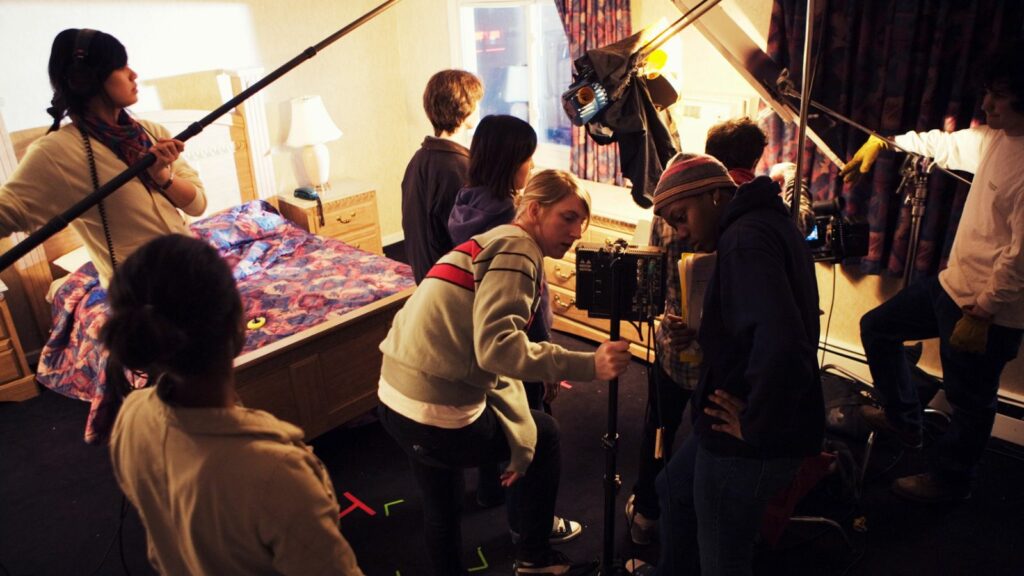Delve into the captivating world of film history topics, where every frame tells a tale of artistic evolution, cultural shifts, and technological advancements. This exploration isn’t just about the glitz and glamour of Hollywood, but it’s an immersive journey through international cinema, silent films, and the advent of digital storytelling.
Film History Topics
This portion of the article expands on certain notable events in film history topics. Concentration will be on the emergence of cinema and the rise of silent films.

The birth of cinema dates back to the 1890s, a period marked by significant technological innovations. In 1895, the Lumière brothers, Louis and Auguste, gave the world its first taste of motion pictures, presenting a series of simple sketches entitled “Workers Leaving the Lumière Factory”. This heralded the start of the celluloid era, which brought stories to life in moving images.
The journey of cinema, however, includes an eclectic mix of contributors. For instance, Thomas Edison’s Kinetoscope and Eadweard Muybridge’s Zoopraxiscope played pivotal roles in the evolution of film. These early experiments in capturing and reproducing motion laid the groundwork for the modern film industry, transforming the way the world consumed stories and information.
The Golden Age of Hollywood
Notable Films and Filmmakers

From the silent era into the talkies, a distinct leap in production occurred with the onset of Hollywood’s first Golden Age. For instance, MGM Studios released the groundbreaking “Gone with the Wind” in 1939. Directed by Victor Fleming, this epic historical romance won eight Academy Awards and remains an iconic film of this era.
Several filmmakers and stars emerged during this period, producing high-quality films that captivated audiences. Extraordinary actors of the time included Clark Gable, Vivien Leigh, Humphrey Bogart, and Bette Davis, while eminent directors encompass names like Orson Welles, Howard Hawks, and John Ford. They significantly contributed to film history, making cinematic masterpieces still regarded as classics today.
Impact on Pop Culture
The Golden Age left an indelible mark on pop culture, influencing fashion, music, and societal norms among many other sectors. For example, female stars like Audrey Hepburn and Katharine Hepburn became stylesetters, their on-screen outfits often dictating the latest fashion trends.
Moreover, the catchy tunes and elaborate musical numbers often found in films of this era resonated with the public, elevating the popularity of swing and jazz music. Screen idols became household names, their images plastered on everything from lunchboxes to clothing, cementing their roles as important icons of pop culture. Thus, this era transformed Hollywood into a cultural powerhouse, whose influence is still palpable in today’s popular culture.
New Waves and Independent Films
Breakdown of the Studio System
The late 1940s and early 1950s marked the demise of the Studio System. This period saw the impact of various antitrust laws that forced major studios to break apart their vertical holdings – a seismic shift from owning production, distribution, and exhibition facilities. Take, for instance, the Paramount Decree of 1948, which disallowed block bookings and sparked an initial wave of change in industry dynamics.
Movies like Otto Preminger’s “The Man with the Golden Arm” (1955), challenged the Production Code. The film, tackling the subject of drug addiction, gained positive acclaim and unveiled the weakening hold of the Code.
The Rise of Indie Cinema

Independent cinema began making its mark from the 1980s onward. Lower-budget films from private companies or individuals began pushing against mainstream conventions. Jim Jarmusch’s “Stranger than Paradise” (1984) presents a perfect example of the indie wave. The black-and-white film, shot on a shoestring budget, exemplified a minimalist style that appealed to an audience looking for alternative narrations.
Emerging technologies ushered in easily accessible film-making equipment, providing a boost to indie filmmakers. Sundance Film Festival, launched in 1978, offered an influential platform for indie cinema, leading to seminal works like Quentin Tarantino’s “Reservoir Dogs” (1992) gaining recognition.
Relentless Creativity
It’s clear that film history topics is a tapestry woven with innovation, risk-taking, and relentless creativity. From the Lumière brothers’ pioneering work to the seismic shift ushered in by “The Jazz Singer,” cinema has consistently evolved. The Golden Age of Hollywood left an indelible mark, shaping the industry’s standards and expectations.


